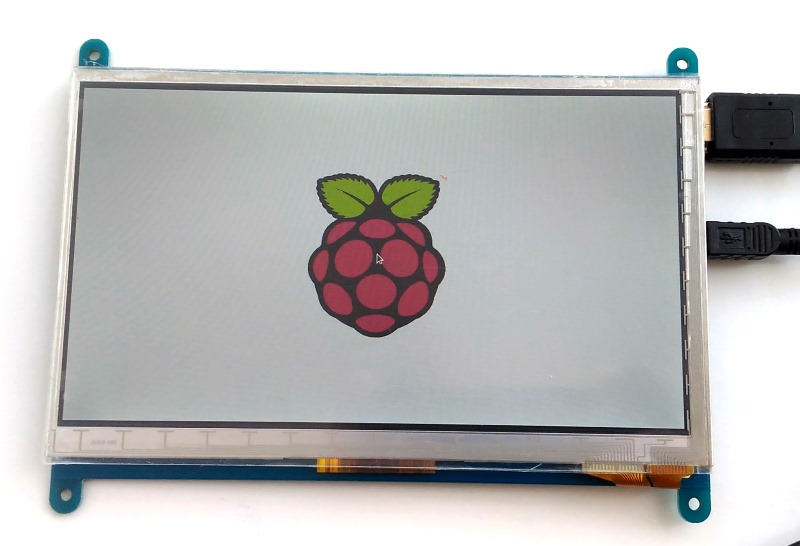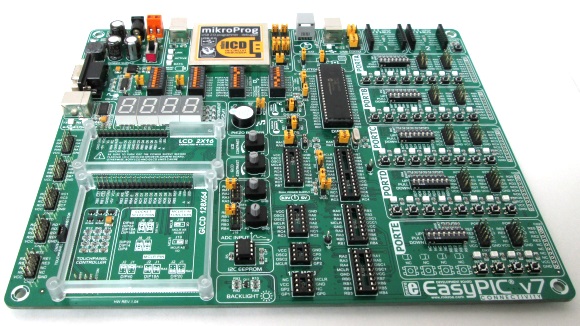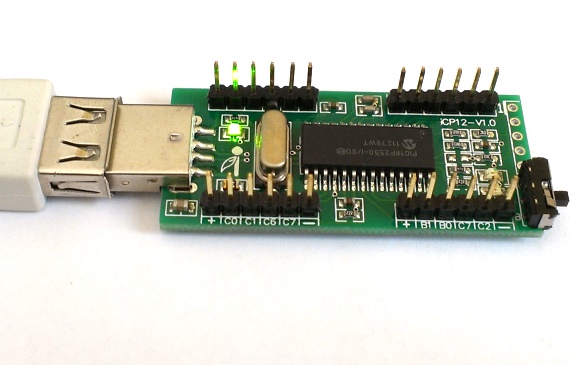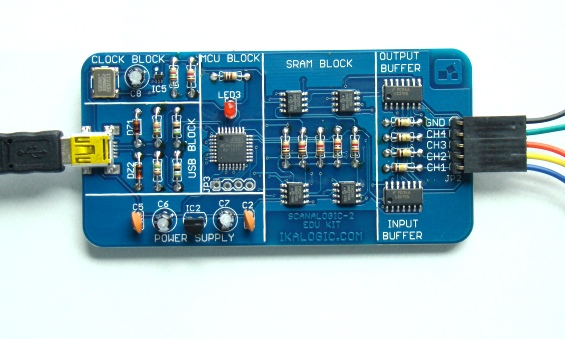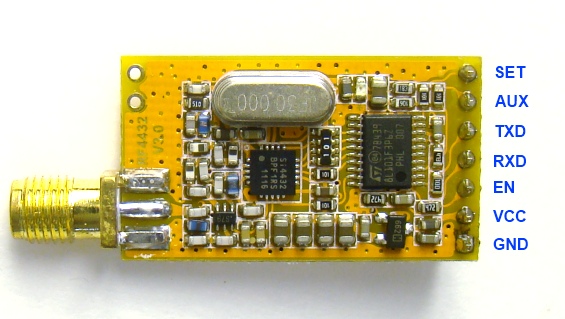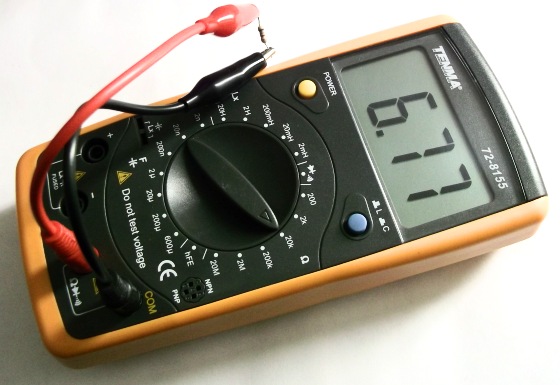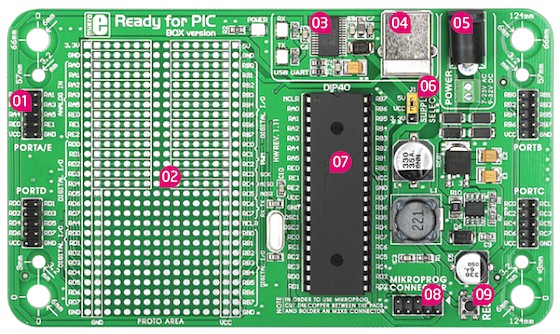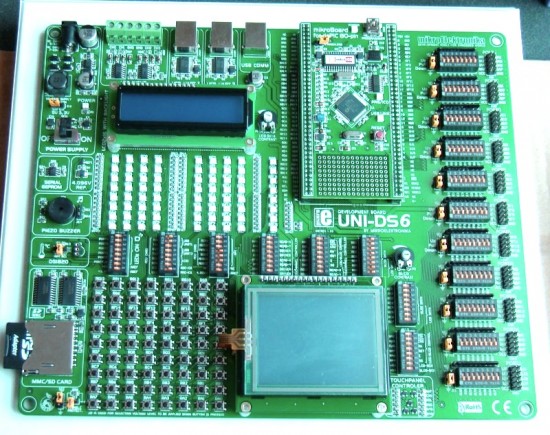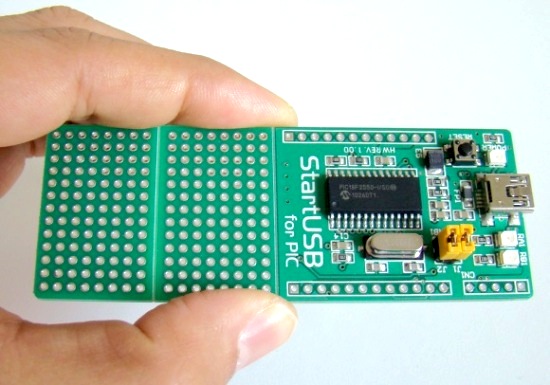Product Reviews
A colorful LCD display is always a great add-on to any Raspberry Pi project. This article provides a quick review of a high resolution (1024×600 pixels) 7″ HDMI LCD product from Elecrow and illustrates a simple way to set it up for Raspberry Pi. With HDMI support, built-in capacitive touchscreen control, and 4 mountable corners, this LCD is a perfect Plug-n-Play display for use with single board computers like Raspberry Pi and Banana Pi.
Here I am reviewing MikroElektronika’s EasyPIC v7, which is the latest PIC development board in their line of EasyPIC series. EasyPIC v7 is one of the best PIC development boards I have ever come across for its high quality build, abundant I/O resources, highly flexible and configurable design, and support of a wide range of 8-bit PIC MCUs. I would like to thank to Newark USA for providing the EasyPIC v7 board for completing this review.
If you are planning on doing an embedded microcontroller project including a graphical LCD display, you might be interested in this PIC-based GLCD development kit from iCircuit Technologies. This decently priced development kit will help you to get started quickly with your project. Here’s a brief review of the kit.
In this blog post, I am reviewing iCircuit Technologies’ iCP12 usbStick development board and their freely downloadable SmartDAQ PC software. The usbStick is a PIC18F2550 based USB development board that comes preloaded with Microchip’s USB HID bootloader that allows users to upload an application firmware directly through a PC’s USB port without any external programmer. It can be bundled with SmartDAQ software to construct a very basic 6-channel (analog) PC data logger.
A logic analyzer is an excellent tool for capturing many digital signals at once and displaying their timing relationships. It is particularly useful in verifying and debugging digital circuits. In this article, I have reviewed the SCANALOGIC-2 educational kit from IKALOGIC and used it to illustrate very basic features of a logic analyzer.
Dorji Applied Technology is a China-based company that primarily focuses on building different types of RF modules that can be easily incorporated in designing wireless data loggers, sensor network, telemetry and other wireless applications. I have been playing with their DRF5150S and DRF4432S RF modules for past couple weeks and I should admit that they are very versatile and easy to use. In this blog post, I will describe these two modules briefly, and illustrate how to put them together to construct a simple wireless sensor application where data from a remote sensor are received and displayed on a PC, without using any external microcontrollers.
An LCR meter is an extremely useful device for measuring three basic impedance elements, namely, Inductance (L), Capacitance (C), and Resistance (R). Recently, I got a TENMA 72-8155 digital LCR meter from Newark for review. I was very excited to receive it as I didn’t have a dedicated LCR meter in my home lab. Here’s my quick review of this product.
The Amicus18 board is physically compatible with Arduino shields. However, the default PIC processor on the board is a 3.3 V type, which could be an issue while interfacing some of the shields that strictly operate at +5V. As a support to the users of the Amicus18 development board, Gevo Electronics from The Netherlands has designed a special shield, named AmiPIC18 LCD. Although the name says it is a LCD shield, but in real it provides a lot more features, which we will be exploring in this article.
Ready for PIC is a compact development tool for 28/40 pin PIC microcontrollers. The board by default is equipped with PIC16F887 MCU placed in a DIP40 socket but it does provide connection holes to accommodate a 28-pin device. To program the MCU you can either use the pre-installed bootloader or an external programmer. For using an external programmer, you need to make a few adjustments on the board.
Amicus18 is also an Arduino-inspired embedded system development platform designed by Les Johnson and introduced by Crownhill Associates; however, it uses a Microchip PIC processor instead of the AVR microcontroller. This article reviews the features of the Amicus platform.
UNI-DS6 is mikroElektronika’s latest version of universal development board that currently supports eight different microcontrollers, namely PIC16F887, PIC18F8520, dsPIC30F6014A, Atmega128, CY8C27643, LPC2148, LPC2214, and AT89S8253. A separate mikroBoard for each of these microcontrollers are available, which can be inserted into the 2×80 pin socket available on the main development board so that you can perform experiments with your choice of microcontroller, while the rest of the board remains the same. Each mikroBoard consists of an on-board programmer, so no need for an external programmer.
StartUSB for PIC is a small development board featuring PIC18F2550 microcontroller with fast USB 2.0 support. It features connection pads for all MCU pins, as well as two additional prototyping areas for placing additional components. The biggest advantage of this board is that the microcontroller comes preprogrammed with fast USB bootloader, and so there is no need of any external programmer.
